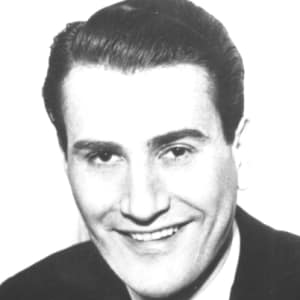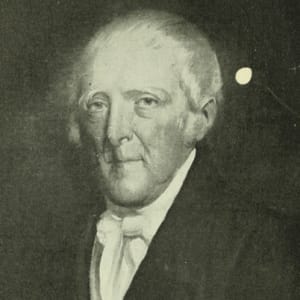
Artie Shaw
Artie Shaw was known for his role as a 1930’s and 1940’s jazz bandleader and clarinetist, known as the “King of the Clarinet”.
Synopsis
Artie Shaw was known for his role as a 1930's and 1940's jazz bandleader and clarinetist, known as the "King of the Clarinet". Shaw was one of the first bandleaders to integrate, hiring Billie Holiday as his vocalist. Although Shaw was notorious for his dislike of his fans, he continued to produce hits rivaling his main competitor, Benny Goodman.
Early Life
Bandleader, clarinetist, composer, writer. Born Arthur Jacob Arshawsky on May 23, 1910, in New York, New York. Sometimes referred to as the King of the Clarinet, Artie Shaw was one of the leading jazz performers and bandleaders of the swing era of the 1930s and 1940s. Born on New York’s Lower East Side, he was the only child of Jewish immigrants from Russia and Austria.
The family eventually moved to New Haven, Connecticut, where Shaw spent many of his formative years. A shy child, he was deeply hurt by the anti-Semitic taunts from his schoolmates. Shaw was further wounded when his father abandoned the family.
While he learned the ukulele early on, Shaw first started getting serious about playing music when he took up the saxophone. He later moved on to the clarinet. Around the age of 15, he quit school to learn to become a better musician. Shaw listened to such jazz greats as Bix Beiderbecke and Louis Armstrong in an effort to improve his own playing. Moving to Cleveland, he eventually found work with Austin Wylie, a well-known bandleader. In addition to his music, Shaw was an avid reader and maintained literary aspirations.
Aspiring Musician
In 1928, Shaw won a trip to Hollywood as part of an essay contest. He met up with some musicians he had known back east. These musicians were with Irving Aaronson’s band, and Shaw joined the group the following year. While with Aaronson, he listened to and learned about the works of such composers as Igor Stravinsky and Claude Debussy. The band spent time in Chicago and then went to New York in 1930. Going out on his own, Shaw soon became an in-demand studio session musician and radio performer. He was briefly married to Jane Cairns in 1932, but that union was later annulled.
Shaw took a break from music for a time, choosing to live in Bucks County, Pennsylvania, and focus on his writing. He also tried his hand at marriage again in 1934—this time he wed to Margaret Allen. (The couple divorced in 1937.) Before long, he was back in New York City’s thriving music scene. Shaw was invited to participate in a 1935 swing concert at the Imperial Theatre. He put together a band, consisting of a string quartet and a rhythm section, and wrote a special composition, “Interlude in B Flat,” for the event. Little known at the time, Shaw was on the same bill as Tommy Dorsey and other popular swing acts. His band, however, gave one of the night’s most memorable performances, and the audience was just wowed by their only song.
Rise to Fame
This led to Shaw starting his own band. Around this time, he became Artie Shaw. He originally used Art Shaw as a stage name, but he was told that the name sounded like a sneeze. Reworking the music of Cole Porter, Richard Rodgers, and Jerome Kern among others, Shaw made these standards swing. He scored his first big success in 1938 with his version of Porter’s “Begin the Beguine.”
Around this time, Shaw hired up-and-coming African American jazz singer Billie Holiday as the vocalist for his band. He was one of the first big band leaders to try to integrate his group, but Holiday eventually quit after encountering racial prejudice while on the road, especially in the South. She did, however, stick around long enough to record one of Shaw’s most famous songs, “Any Old Time,” with the band.
Soon tired of all of the attention, Shaw became irritated with his fans, calling them “morons.” Shaw walked off stage in 1939 during a gig in New York City and went to Mexico. After a few months, Shaw resurfaced, returning to fulfill his contract obligations with his recording company RCA Victor. He scored a hit with a song he discovered in Mexico called “Frenesi.”
More hits followed, Shaw soon cemented his status as one of the most popular figures in swing music. His success rivaled the other big names of the time, such as Benny Goodman and Glenn Miller. Since both he and Goodman were clarinetists, the rivalry was more intense between them. While he respected Goodman’s technical abilities, Shaw thought that they had very different approaches to their music. He believed that he was more focused on being innovative instead of pleasing the masses. “I was playing; he was swinging,” Shaw once said.
Personal Life
Whatever his intentions, Shaw’s music really struck a cord with audiences. This handsome performer also became a fixture in the gossip columns for his romances. He was able to attract the attentions of the beautiful actress Lana Turner. The two met while making the film Dancing Coed (1939). Wed in 1940, they divorced after several months together. Shaw scored two Academy Award nominations that year for his work on Second Chorus (1940)—for his film score and the song “Love of My Life.” He wrote the music for the song while Johnny Mercer created the lyrics.
In 1941, Shaw married Elizabeth Kern, daughter of composer Jerome Kern, and then shortly thereafter he joined the military. He eventually formed a band that played for the troops serving in World War II in the Pacific. Keeping up a relentless schedule, he and the band played throughout the southwest Pacific in jungles, on islands, and aboard ships. Shaw became so exhausted—some reports indicate he suffered a mental breakdown—that he received a medical discharge in 1944. Shaw and his fourth wife split up after having one son, Steven, together.
Again charming one of Hollywood’s most attractive leading ladies, Shaw wed actress Ava Gardner in 1945. The union lasted about a year. He quickly moved on to novelist Kathleen Winsor and another short marriage. In the late 1940s, Shaw continued to experiment with his music, recording classical as well as jazz pieces.
Brutally candid, Shaw wrote his autobiography, The Trouble with Cinderella: An Outline of Identity, which was published in 1952. He married again that year, this time to actress Doris Dowling. By this time, Shaw felt out of step with the popular trends in music and decided to retire in 1954. He also ended his latest marriage not long after. The couple had a son, Jonathan, before divorcing in 1956.
Devoting himself to writing, Shaw spent several years living in Spain with his eighth wife, actress Evelyn Keyes, whom he married in 1957. He published a collection of novellas entitled I Love You, I Hate You, Drop Dead! in the mid-1960s. In the early 1970s, Shaw moved to the Californian town of Newbury Park where he lived for the rest of his life. He and wife Evelyn lived separately from 1970 until their divorce in the mid-1980s.
Legacy
Around this time, Shaw appeared with a band he formed to play his most popular songs and arrangements. He did not, however, lead the group; he had clarinetist Dick Johnson serve as bandleader. In addition to writing a collection of short stories, The Best of Intentions, Shaw also lectured on music and other numerous topics.
In 2004, Shaw received a Lifetime Achievement Award from the Recording Academy. He died on December 30 of that year at his Newbury Park home from complications related to diabetes. Shaw once said that his epitaph in Who’s Who should read, “He did the best he could with the material at hand.” He later revised that statement, considering “Go away” more fitting for himself—a cantankerous, but unarguably brilliant musician and composer.




